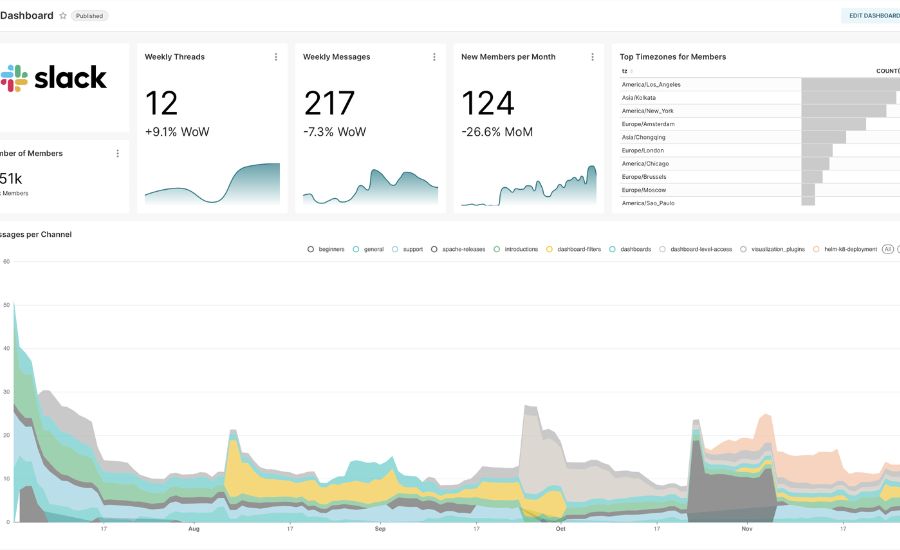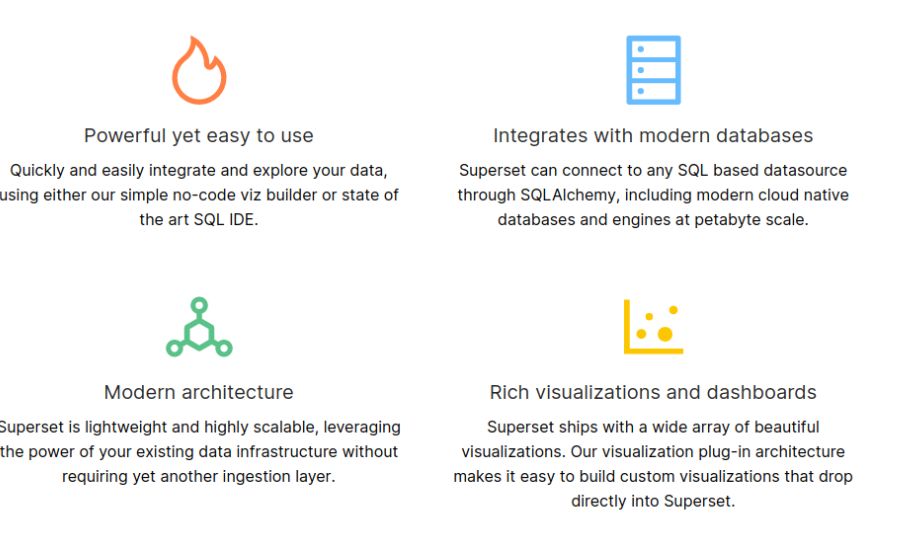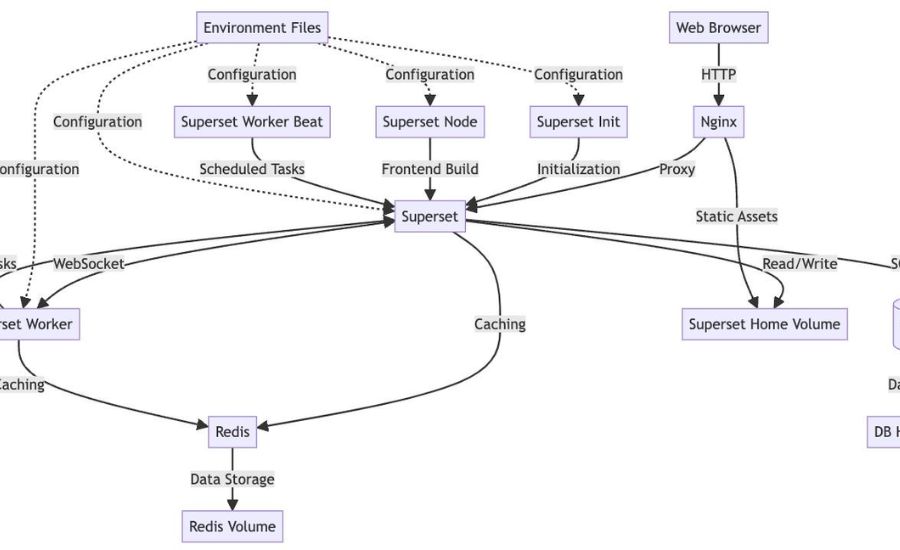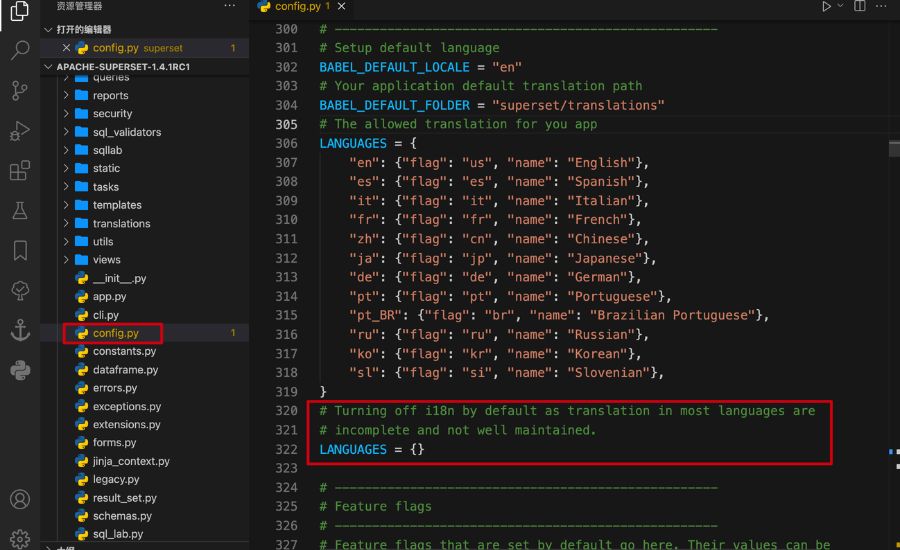Introduction to Apache Superset 4.0.2 Languages Enable
Platforms for data visualization, such as Apache Superset 4.0.2, are becoming essential for businesses worldwide. These tools make it easier to analyze complicated datasets and convert them into formats that are easy to understand visually. But as companies grow to cater to varied teams and audiences throughout the world, language customisation has emerged as a crucial component for increasing accessibility and boosting user satisfaction.
This tutorial will take you step-by-step through the process of changing Apache Superset’s default language to better suit your community or target audience. Additionally, let us examine some SEO advantages, best practices, and the prospects for language support in data analytics platforms.
Why Apache Superset 4.0.2 Stands Out in Data Visualization

Leading companies worldwide rely on Apache Superset 4.0.2, a robust, open-source platform for business intelligence and data visualization. Superset has a devoted following among data analysts, developers, and corporate executives due to its versatility, which includes the ability to create interactive dashboards and explore data in real time.
Version 4.0.2, the most recent release, is notable for its increased emphasis on the user experience, including features that give priority to usability, customisation, and accessibility. Expanded language support, which lets users choose a default language, is one of its most notable enhancements. For businesses managing multilingual teams or operating in varied markets, this feature is revolutionary since it makes it simpler than ever to modify Superset to meet the demands of a worldwide audience.
Step-by-Step Guide to Change the Default Language in Apache Superset 4.0.2
Apache Superset 4.0.2’s default language setting is an easy way to make sure the platform suits your team’s tastes and enhances accessibility. Follow these steps to configure it:
Step 1: Locate the Configuration File
In the root directory of your Apache Superset installation, locate the superset_config.py file.
You can create this file if it has not already been made by duplicating the installation process’s default configuration template.
Step 2: Modify the Language Preferences
In a text editor, open the superset_config.py file.
Add or change the line that follows:
python
Copy and edit DEFAULT_LANGUAGE = “en” Change “en” to the language code for the language you choose. For instance:
“zh” for Chinese, “es” for Spanish, and “fr” for French
Save the file with the modifications.
Step 3: Verify the Availability of Language Files
Verify that you have installed the required language files for the language you have chosen.
If the files are missing, obtain and integrate the necessary translation packages by consulting the Apache Superset instructions.
Step 4: Restart Apache Superset
Restarting the Superset service will apply the updated configuration. Depending on your configuration, enter the following command in your terminal:
Systemctl restart superset bash copy edit
Step 5: Confirm the Modifications
Open Apache Superset in your browser.Make sure menus, buttons, and other components are shown in the newly chosen language by navigating the UI.
Best Practices for Choosing the Right Language Setting
Although altering Apache Superset’s default language is a fantastic starting step, there are a few best practices to adhere to in order to fully utilize this functionality and improve user experience. The following advice will help you:
1. Recognize Your Viewers
Spend some time examining the demographics of your team members or users. To find out which languages your audience speaks most frequently, use tools like analytics platforms or user polls. This guarantees that the default language selected fits their requirements and inclinations.
2. Accept Localization
Think about adding dynamic language selection choices if your company has operations in several different locations. Instead of using a single fixed default language, let users select their favorite language within the platform. This adaptability enhances accessibility and serves a wide range of users.
3. Carry out localization Assurance of Quality (QA)
Test the platform completely in the chosen language after you have changed the language settings. When translating, be mindful of contextual relevance, cultural quirks, and correctness. This process guarantees that the interface will always be user-friendly and polished.
4. Encourage Consistency Across the Team
Make sure that everyone is aware of the language settings and how they affect workflows by collaborating closely with your operations and IT departments. Consistency can be maintained with the use of clear communication and training, particularly in global teams where cooperation is essential.
Why Language Settings Matter in Globalized Data Analytics
Language has a big impact on how people use a site and understand its features. Confusion, annoyance, or inefficiency can result from even small challenges, such a default language that is unfamiliar. By providing customizable language choices, you make your platform more accessible to a worldwide audience and foster a more welcoming and user-friendly environment.
1. Enhanced Accessibility
One of the main advantages of changing the language settings is improved accessibility.
Giving people a familiar language guarantees that they can comprehend menus, configure choices, and explore dashboards without needless difficulties. Increased productivity and efficiency are the results of this accessibility.
2. Enhanced Involvement
Users are more inclined to investigate the platform’s features and utilize all of its potential when they can communicate with it in the language of their choice. Deeper involvement and active participation are promoted by a comfortable interface.
3. Increased Worldwide Presence
A localized user experience increases loyalty and trust for companies with different locations. Users are more likely to feel appreciated and connected when they realize that the platform reflects their language and cultural background.
Language setting customization is more than simply a technical change; it is a step toward developing a tool that is efficient and friendly to all users.
Real-World Examples of Improved Engagement

Effective language localization has resulted in notable increases in user happiness and engagement for businesses in a variety of industries. Here are two instances of the impact in the actual world:
1. Multinational IT Company: After launching its internal Apache Superset dashboard in three commonly spoken languages, this multinational corporation witnessed a 38% boost in platform use. The organization promoted greater awareness and more employees’ efficient use of the platform by attending to the language demands of their varied workforce.
2. Logistics Firm: This company saw a 70% decrease in support tickets for user interface confusion after changing the Superset interface’s default language to the major language of their largest staff group. This modification greatly improved their team’s overall user experience in addition to increasing operational efficiency.
These illustrations show how even minor changes can result in significant increases in usability and engagement, highlighting the real advantages of giving language modification first priority.
SEO Benefits of Offering Multilingual Options
Not only can customization improve user experience, but it may also greatly increase platform visibility and draw in more users. Here’s how:
1. Higher Search Engine Rankings: You will be more visible in region-specific search queries if you optimize your dashboards or content for several languages. Localized information is given preference by search engines, improving your chances of connecting with people across a range of geographic locations.
2. Global Audience Targeting: You can guarantee that users from diverse geographical areas can obtain pertinent and useful information by providing material in many languages.By being inclusive, you may reach a wider audience and build stronger relationships with audiences around the world.
3. Improved User Retention: If users can easily use your platform in their favorite language, they are more likely to come back. Over time, this familiarity fosters engagement and loyalty by producing a favorable user experience.
Customizing your platform’s language is a strategic investment that will increase accessibility, engagement, and global competitiveness. It goes beyond simple technological improvements.
Make Apache Superset 4.0.2 Work for You
Although language options may not seem like much, they have a significant impact on how accessible and usable any platform is. With a few easy configuration changes, Apache Superset 4.0.2 gives businesses the ability to improve user engagement, expedite processes, and increase their worldwide visibility.
Utilize this potent function right now. Customizing Apache Superset’s language settings is an easy yet powerful method to promote cooperation, increase productivity, and propel success—whether you’re managing varied teams or serving a global clientele.
Imagining The Future of Language Settings in Data Analytics

The future of language settings in programs like Apache Superset is expected to become even more user-centric and flexible due to the quick developments in AI and machine learning. Among the possible innovations are:
Real-time AI translations are interfaces that create a personalized experience by automatically changing the language according to user preferences or behavior.
Multilingual Dashboards: Hybrid configurations that allow graphic components and data labels to appear in multiple languages at the same time to support a variety of teams.
Locale-Based Recommendations: Based on geolocation information and analytics, these recommendations are more relevant and specific to the regions of the users.
Businesses can keep ahead of the curve and make sure their data visualization tactics are not only successful but also future-proof by adopting these new trends. This innovative strategy promotes diversity and involvement globally while assisting firms in keeping a competitive edge.
Facts:
About Apache Superset 4.0.2
- An open-source business intelligence and data visualization tool.
- Features include interactive dashboards, real-time data exploration, and expanded language customization.
- Used by leading global companies for its usability, flexibility, and accessibility.
Step-by-Step Language Customization Guide
- Locate Configuration File: Open or create superset_config.py in the root directory.
- Modify Language Preferences: Update the DEFAULT_LANGUAGE variable with the desired language code (e.g., “es” for Spanish).
- Verify Language Files: Ensure required translation packages are installed.
- Restart Apache Superset: Restart the service to apply changes.
- Confirm Changes: Check the interface for proper language display.
Best Practices
- Understand your audience through analytics or surveys.
- Enable user-driven language selection for broader adaptability.
- Perform quality assurance to ensure cultural and contextual accuracy.
- Train teams on language settings for consistent workflows.
Benefits of Language Settings
- Enhanced accessibility for global teams.
- Improved user engagement through familiar interfaces.
- Increased global presence by catering to diverse audiences.
- SEO advantages such as higher rankings and better audience targeting.
Future Trends
- Real-time AI Translations: Interfaces adapting language dynamically based on user behavior.
- Multilingual Dashboards: Data labels in multiple languages on the same interface.
- Locale-Based Recommendations: Personalized regional insights powered by geolocation.
Summary:
The article discusses the importance of language customization in data visualization tools like Apache Superset 4.0.2, highlighting its role in improving accessibility, user engagement, and global reach. It provides a step-by-step guide for changing the platform’s default language settings and offers best practices for optimizing this feature. Real-world examples illustrate the benefits of language localization, such as increased user satisfaction and operational efficiency. Additionally, the article explores the SEO advantages of offering multilingual options and envisions the future of language settings in data analytics platforms, emphasizing emerging trends like real-time AI translations and multilingual dashboards.
FAQs:
1. What is Apache Superset 4.0.2 used for?
Apache Superset is an open-source tool designed for data visualization and business intelligence. It allows users to create dashboards, explore datasets, and generate insights in a user-friendly interface.
2. Why is language customization important in data analytics tools?
Language customization improves accessibility, enhances user satisfaction, and supports collaboration among diverse, multilingual teams. It ensures that users can interact with the platform effectively.
3. How do I change the default language in Apache Superset?
You can change the language by modifying the superset_config.py file, updating the DEFAULT_LANGUAGE variable with the appropriate language code, and restarting the service.
4. What languages are supported by Apache Superset?
Apache Superset supports a wide range of languages, including English (“en”), Spanish (“es”), Chinese (“zh”), and French (“fr”), among others.
5. What are some real-world examples of language customization success?
- A multinational IT company saw a 38% increase in platform usage by offering dashboards in multiple languages.
- A logistics firm reduced support tickets by 70% after implementing language localization for their largest user group.
6. What are the SEO benefits of offering multilingual options?
Multilingual content improves search engine rankings in region-specific queries, increases global visibility, and enhances user retention by making the platform accessible to diverse audiences.
7. What trends will shape the future of language settings in data analytics?
Emerging trends include real-time AI translations, multilingual dashboards, and personalized recommendations based on geolocation and user behavior.
For more Information About information visit bloghives




